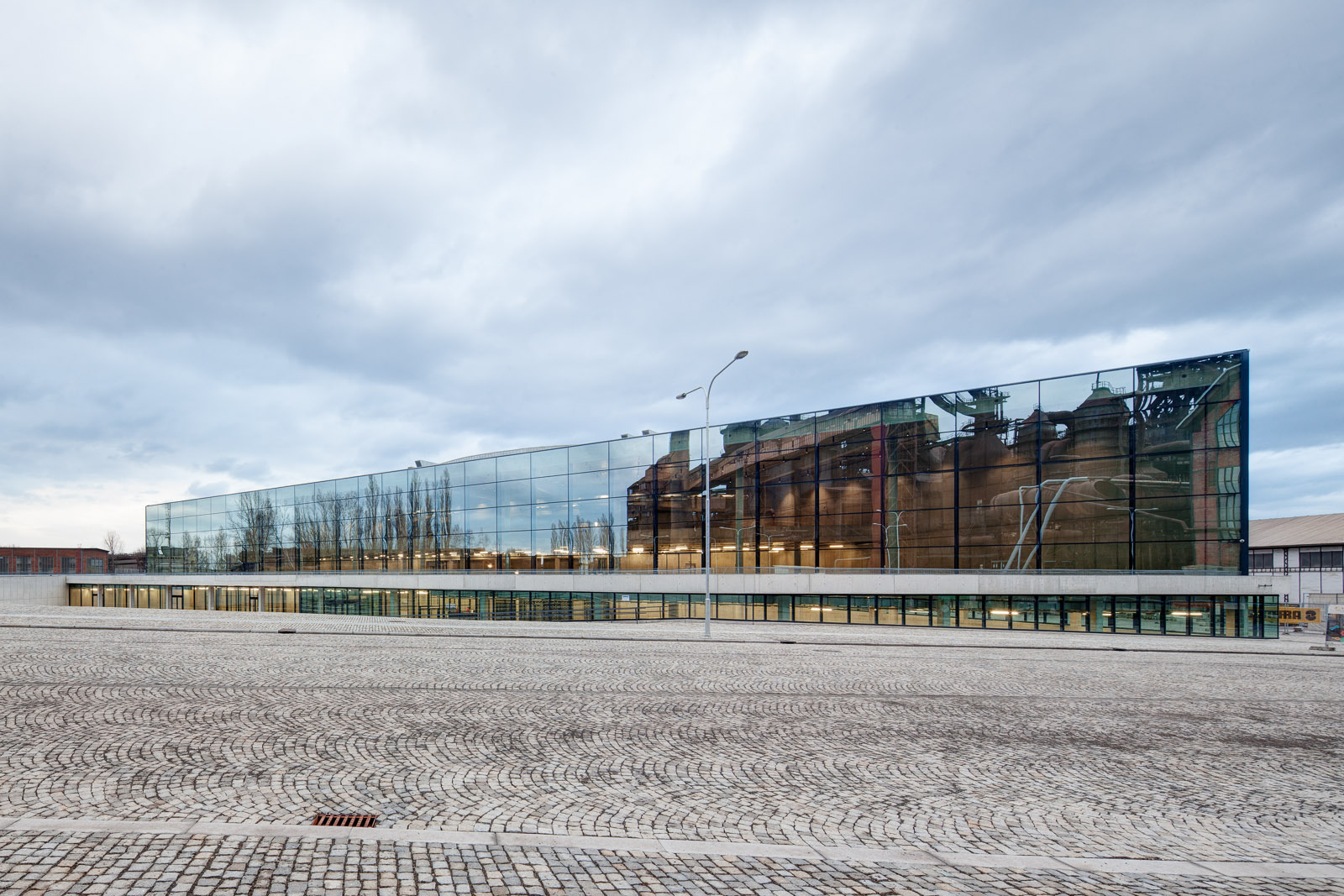
The award for the new building in the historical environment was given to the World of Technology
 |
The World of Technology in Ostrava, which is part of the revitalization project of the Vítkovice Steelworks area, aims to support the prestige of science and research among the public, change attitudes towards technical fields, and make them accessible to the public. The building is set on a triangular floor plan with a rounded right angle, featuring a stunning 125-meter-long and 12.5-meter-high mirrored main facade.
The building defines the area of the national cultural monument of the Vítkovice Steelworks, whose panorama is reflected on the glass wall of Pleskot's building. "Undoubtedly, it is a distinctive building, yet by its conception, it complements the whole of this industrial complex," stated the jury of the Club for Old Prague Award.
Josef Pleskot received the Architect of the Year award for the World of Technology last year, which is awarded as part of the FOR ARCH fair for extraordinary contributions to architecture in the last five years. The building was nominated in the Building of the Year competition and Czech experts also submitted it to the international competition for the Ludwig Mies van der Rohe Award. Other works by Pleskot known to the broader public include, for example, the town hall in Benešov, the Palmovka-Park office building in Prague Libeň, and the multifunctional hall Gong in Ostrava.
The Club for Old Prague Award seeks new architectural works every year that behave exemplary toward the old context and bring benefits to it. This year, alongside Pleskot's building, there were five other nominated constructions. The multifunctional building on Burianova Square in Brno-Žabovřesky by Tomáš Pilář completes the space of the old Brno suburb, while the wooden kiosk with refreshments in the Castle Garden in Jičín by architects Radek Květ and Jiří Zrzavý, according to the jury, contrasts pleasantly with the classical monumental concept of the garden through its light and dynamic form.
The greenhouse in the Květná Garden in Kroměříž received dimensions and a shape from architects Antonín Novák, Petr Valenta, and Eduard Štěrbák that sensitively integrates into the restored UNESCO heritage site. The laboratories of the Institute of Organic Chemistry and Biochemistry of the Czech Academy of Sciences in Prague - Dejvice, designed by Kateřina Zochová and Ivan Šrom, with their organic, amoeba-like shape, according to the jury, enliven the classical complex of university institutes, and the laboratories of the technological faculty of the Zlín University by the team of Vladislav Vrána, with their exposed construction and choice of materials, engage with the typical appearance of Baťa buildings in the Zlín industrial area.
The English translation is powered by AI tool. Switch to Czech to view the original text source.
0 comments
add comment












